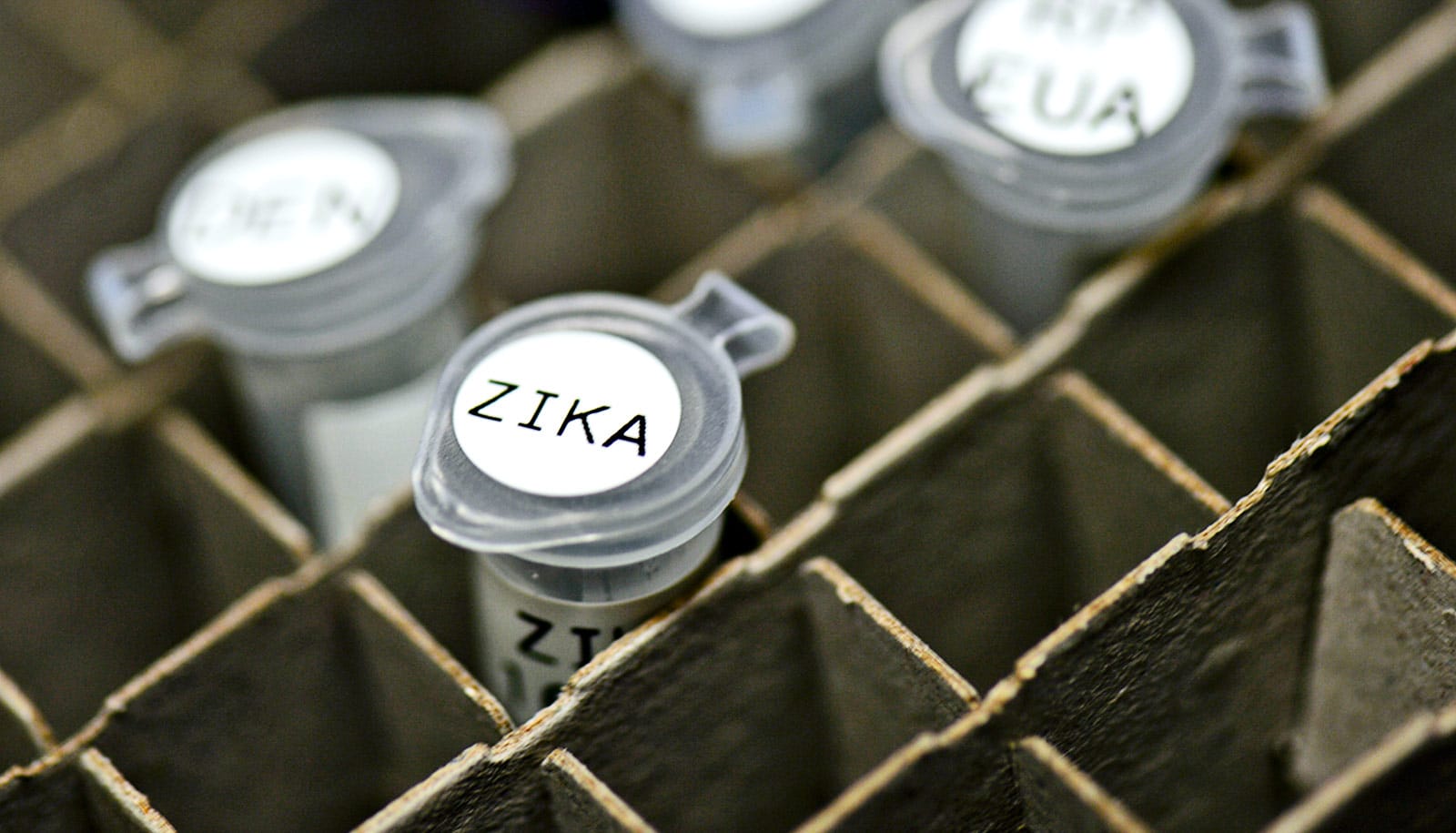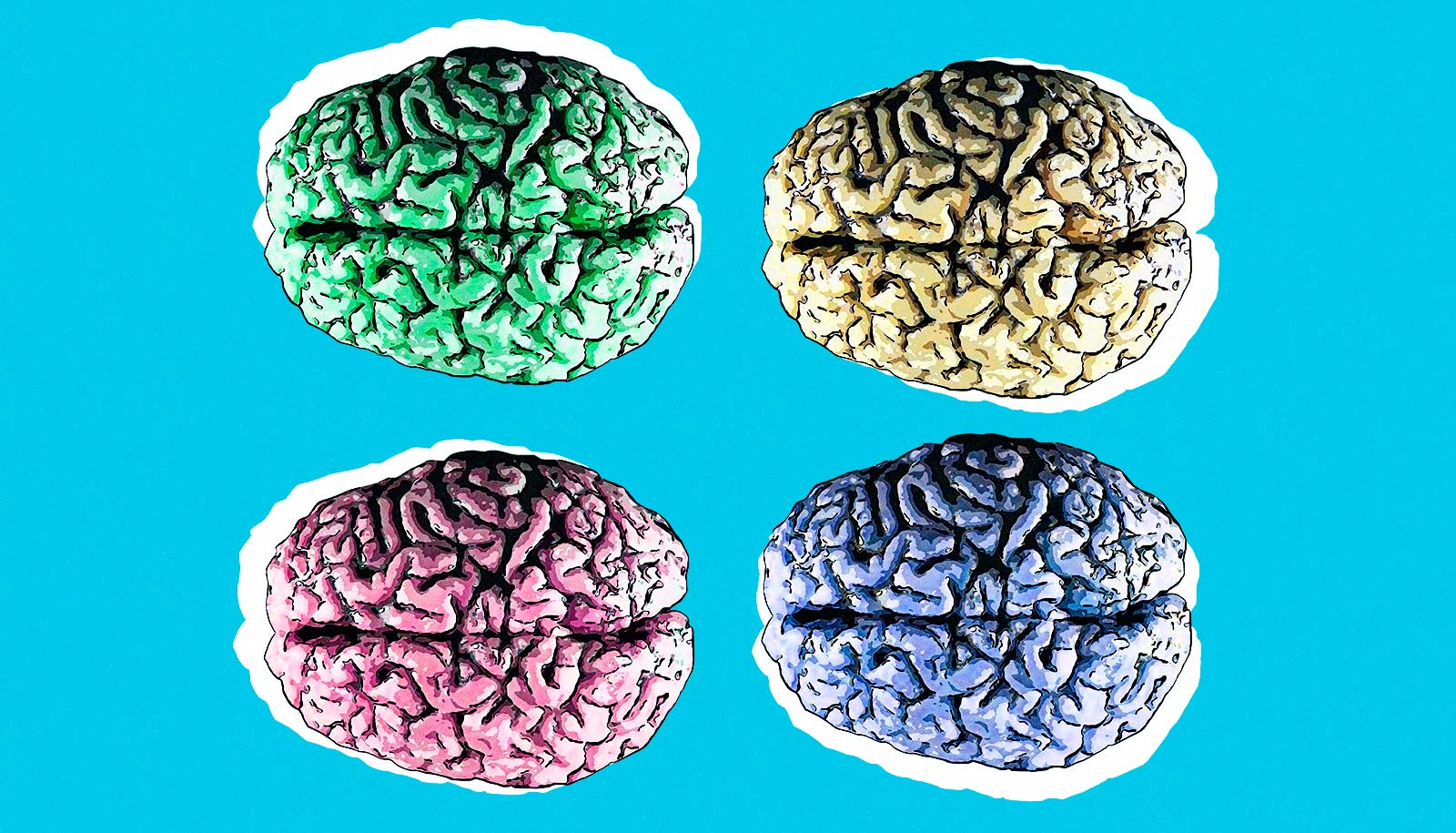The Zika virus can activate immune cells to destroy glioblastoma, an aggressive brain cancer, a new study with mice shows.
The virus gives a powerful boost to an immunotherapy drug and sparks long-lasting immunological memory that can ward off tumor recurrence for at least 18 months, the researchers found.
The findings, published in JCI Insight, suggest the virus might hold a key to unlocking the power of immunotherapy for glioblastoma, a lethal brain cancer that typically results in death within two years.
Immunotherapy aims to turn the body’s own immune system into a weapon to eliminate cancer cells. The approach has proven effective for blood, skin, and some other cancers, but it has so far shown limited benefit for glioblastoma patients.
“Glioblastoma is a difficult disease because it progresses so quickly, and we don’t have any interventions that ultimately alter its course,” says co-senior author Milan G. Chheda, assistant professor of medicine and of neurology at Washington University in St. Louis.
“We can treat the initial tumor, but recurrence is quick and inevitable. By using Zika virus, we’re revving up the immune system to respond to an otherwise ineffective immunotherapy,” Chheda says. “This also sets the stage to prevent recurrence, allowing us to overcome two major barriers to effective treatment.”
Zika dramatically increases survival
Glioblastoma is the most common and aggressive form of brain cancer. About 12,000 people are diagnosed each year in the US, and average survival time is only 14 months. In 2017, Chheda and co-senior author Michael S. Diamond, a professor of medicine, of molecular microbiology, and of pathology and immunology, showed that Zika virus kills brain cancer stem cells, the kind of cells most resistant to standard treatments.
To better understand how Zika virus works against brain cancer, researchers transplanted brain cancer cells into the brains of mice. One week later, they injected Zika virus into the mice’s quickly growing tumors, or sterile saltwater for comparison.
Zika virus treatment improved the animals’ chance of survival dramatically: to 63% from 10% for one cancer cell line, and to 37% from 0% for the other. Further analysis showed that the virus had attracted large numbers of immune cells of many kinds to the tumors, most importantly so-called cytotoxic T cells, a type of immune cell specialized for killing cancerous cells.
What’s more, Zika virus treatment induced lasting immunological memory. The researchers re-introduced the tumor into the other side of the mice’s brains a year and a half after the original tumor. All but one of the mice destroyed the new tumor within a few weeks.
Safety and efficacy
Many tumors create suppressive environments around themselves that hinder an effective immune response. The suppression is created, in part, by so-called immune checkpoint molecules such as PD-1 that keep immune cells that kill cancer cells—called cytotoxic T cells—turned “off” and unable to attack. Immunotherapy drugs that target PD-1 have been used successfully to treat skin, blood, lung, and other cancers.
But not glioblastoma. Along with keeping immune cells turned off, glioblastomas manage to keep most of them at bay. Activating immune cells is not enough to eradicate a tumor if there are only a handful of immune cells around, Chheda says. But, Zika virus’s ability to attract large numbers of immune cells to the tumor—combined with immunotherapy to free them from suppression—might tip the balance toward tumor destruction.
To find out, the researchers implanted cancer cells in mice’s brains and then treated the animals with Zika virus, an antibody that inhibits PD-1, both or neither. Zika virus treatment alone and PD-1 inhibition alone each increased survival to about 60% from about 30%. The combination brought the survival rate close to 90%.
The results are promising, but Zika virus is best known for causing brain damage in fetuses, so any therapy that involves putting the virus in people’s brains raises safety concerns. The researchers repeated key experiments with a weakened form of the virus and found the same promising cancer-fighting results, albeit not quite as pronounced.
They plan additional studies to evaluate the safety and efficacy of the weakened virus as a treatment for patients with glioblastoma.
Funding came from the Robert J. Kleberg Jr. and Helen C. Kleberg Foundation, the Alvin J. Siteman Cancer Research Fund, the Washington University LEAP Fund, the DeNardo Education and Research Foundation, the Cancer Research Foundation, the Doris Duke Charitable Foundation, the National Institutes of Health, Mark and Kathy Frederickson, the friends and families of Larry Stark and Brett Pickle, and the Alvin J. Siteman Cancer Center Siteman Investment Program.



